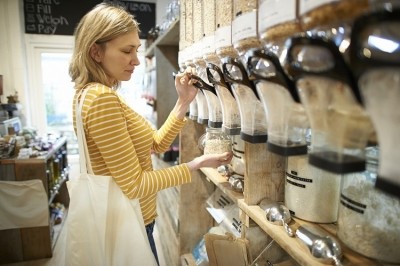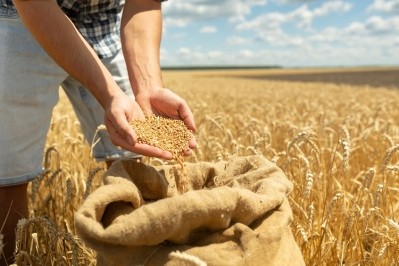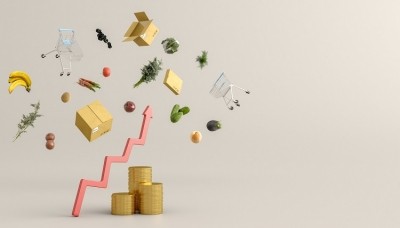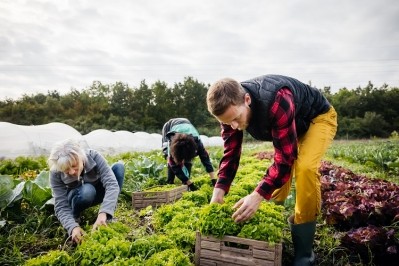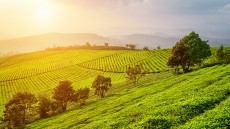AI in crop development: The future is here

AI has permeated every corner of human existence. From tracking the number of steps an individual walks in a day to predicting global weather patterns, AI is everywhere.
It’s not surprising then, to find that the food industry is using AI to maximise food production at every stage of production, from farm to fork. And science is helping them do it.
How science is helping to understand and develop crops
Though still a relatively new form of technology, artificial intelligence (AI) is proving invaluable to the food and beverage industry, showing that it's not only here for now, it's here to stay.
"AI is a modern-day reality with the possibility to revolutionise any and every industry. It’s the cornerstone of the fourth Industrial Revolution," said Charles Banks, co-founder of thefoodpeople, while speaking at IFE 2024.
"AI is a modern-day reality with the possibility to revolutionise any and every industry. It’s the cornerstone of the fourth Industrial Revolution."
According to thefoodpeople, AI is already shaking up the food and beverage industry by speeding up scientific research, streamlining stock management and supporting regenerative agriculture through the evolution of green technology. It's also improving the consumer experience through functions such as product recommendations.
Now, the food industry is looking to AI, to help improve crop development.
Research scientists from the Institute of Sugar Beet Research in Göttingen, and the University of Bonn, have begun experimenting with laser scanning using a LIDAR (Light Detection and Ranging) 3D scanner, to generate 3D models of the above-ground parts of sugar beet plants. The research is part of a dedicated project to develop AI-assisted crop development.
What is a LIDAR (Light Detection and Ranging) 3D scanner?
LIDAR, stands for ‘light detection and ranging’ or ‘laser imaging, detection, and ranging’. It is a method for determining ranges by targeting an object or a surface with a laser and measuring the time for the reflected light to return to the receiver.
It can scan in multiple directions, allowing for the creation of 3D images.
LIDAR is commonly used to make high-resolution maps, providing 3D images of the earth's surface and ocean floor. It is also being increasingly used in navigation.
So, how does the technology work and how will it help to improve crops?
The research, published in GigaScience Press, combines laser scanning with 3D printing, to create a detailed 3D model of a sugar beet plant. But why turn the plants into 3D models?
The team explains that having a physical example of the plant, as a reference, allows for clear analysis of all relevant characteristics, including more complex traits, such as the angle of the leaves. This provides a greater understanding of the essential characteristics of the above-ground parts of the sugar beet plant and can be used for AI-assisted crop improvement. The process of mapping a plant is known as ‘plant phenotyping’.
Modern plant breeding is primarily data based, involving machine learning algorithms and sophisticated imaging technology, to select the desirable traits of a plant, following the process of phenotyping.
In the past, phenotyping relied on measurements taken manually by humans. Now however, sensor technology, allows for phenotyping developments to be automated. Measurements taken can include plant size, quality of fruit, and leaf shape and size.
And as well as proving highly efficient, in terms of gathering the basic information, the sensors are able to capture more complex information on a particular plant, that would be difficult to gather manually on a large scale.
Additionally, the research team has made the files for the new 3D-printed model of the sugar beet plant freely available for download, allowing for their crop research and data to be shared across the globe.
“In the field of three-dimensional plant phenotyping, the referencing of utilised sensor systems, computer algorithms, and captured morphological parameters represents a challenging yet fundamentally important task,” explains researcher, Jonas Bömer. “The application of additive manufacturing technologies for the generation of reproducible reference models presents a novel opportunity to develop standardised methodologies for objective and precise referencing, thereby benefiting both scientific research and practical plant breeding.”
Though used to improve the understanding of sugar been plants, this technology can be used to improve the understanding and development of all crops.
“The value in a printable 3D model is that you can print multiple copies, one per field of crops,” says Chris Armit, a data scientist at GigaScience, while commenting on the study. “As a low-cost phenotyping strategy, where the major cost is the LIDAR 3D scanner, it would be fantastic to see this approach tested on other crops such as rice or African orphan crops, where there is a need for low-cost phenotyping solutions.”

Why improving food systems is essential for food security
The team's research can help to determine the ideal growing conditions for plants, by analysing the conditions of the plants that thrived. It will also help to identify any disease within a crop.
Maximising crop success is essential as the global population continues to grow, putting a strain on availability of food.
"A growing population means more mouths to feed," said a spokesperson for the UK cross-government programme, Global Food Security. "The expanding global population is getting wealthier, and richer people tend to eat more and demand food that is resource intensive to produce."
This is exacerbated by the ongoing issue of climate change impacting food supplies.
"Global warming is influencing weather patterns, causing heat waves, heavy rainfall, and droughts," said William R. Sutton, global lead for Climate Smart Agriculture for the World Bank. "Rising food commodity prices in 2021 were a major factor in pushing approximately 30 million additional people in low-income countries toward food insecurity."
Furthermore, current food systems are a major contributing factor to climate change.
"The way food systems have evolved over past decades means that they now face major risks, which in turn threaten the future of food systems themselves," explains a spokesperson for Food and Agriculture Organization of the United Nations. "Food systems have seriously contributed to climate change, environmental destruction, overexploitation of natural resources and pollution of air, water and soils."
Source: A 3D printed plant model for accurate and reliable 3D plant phenotyping
Published online: 20 June 2024
DOI: https://doi.org/10.1093/gigascience/giae035
Authors: Jonas Bömer, Felix Esser, Elias Marks, Radu Alexandru Rosu et al.

